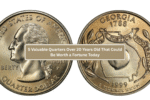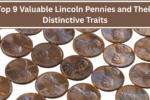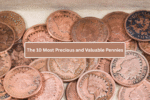Coin collecting, or numismatics, is a hobby that blends history, artistry, and the thrill of the hunt. While some might assume it requires a hefty financial investment, you can actually begin building a meaningful collection with as little as $50. With a bit of strategy, patience, and curiosity, even beginners can dive into this fascinating world and begin discovering coins of real historical and monetary value.
Here’s how to get started on a budget – and where to look for coins that may already be hiding in plain sight.
Step 1: Start With What You Have
Before you spend a single dollar, take a look at your spare change, coin jar, or old piggy bank. Many valuable coins – especially error coins and limited mintages – can still be found in everyday circulation.
Look out for:
- Lincoln cents from pre-1982 (made mostly of copper)
- Quarters from the 50 State Quarters Program (1999-2008)
- America the Beautiful Quarters (2010-2021)
- Wheat pennies (produced from 1909 to 1958)
- Nickels with special designs, like the 2004-2005 Westward Journey series
To identify rare or error coins, consult reliable coin guides and numismatic publications.
Step 2: Learn the Basics of Coin Collecting
Understanding the basics of coins – such as mintage years, mint marks, grades, and historical context – is crucial for knowing what to look for.
Key terms to know:
- Obverse: The front side of the coin
- Reverse: The back side
- Mint mark: A small letter indicating where the coin was minted (e.g., “D” for Denver, “S” for San Francisco)
- Grade: A coin’s condition, which significantly impacts its value
There are many beginner-friendly resources that explain coin terminology and provide price guides.
Step 3: Set a Focus for Your Collection
With a $50 budget, it helps to focus your efforts on a particular type of coin. This gives your collection direction and makes it easier to spot valuable items.
You could focus on:
- A historical period (e.g., coins from World War II)
- A denomination (e.g., nickels or quarters)
- Mint errors (e.g., double dies, off-center strikes)
- Design themes (e.g., commemorative coins, presidential portraits)
Starting small and specific helps avoid overwhelm and increases your chances of finding worthwhile coins.
Step 4: Buy Coins Strategically
With your budget in mind, avoid overpriced collectibles or random bulk coin lots. Instead, consider these options:
1. Coin Shops and Shows
Local coin shops often sell circulated and uncirculated coins at reasonable prices. Coin shows are great for browsing diverse selections and talking to knowledgeable collectors.
2. Official Mint Products
The U.S. Mint offers proof sets, uncirculated coin sets, and commemorative coins. While some sets exceed $50, there are individual coins and smaller sets that are affordable and backed by authenticity.
3. Online Marketplaces
You can find affordable coins on popular online platforms, but exercise caution. Look for sellers with positive ratings and always compare prices using up-to-date coin value guides.
4. Coin Roll Hunting
Visit your bank and trade part of your $50 for rolls of pennies, nickels, or quarters. This method – called “coin roll hunting” — is a low-cost, high-reward strategy. Look for:
- Silver dimes and quarters (dated 1964 or earlier)
- Low-mintage coins
- Minting errors
Step 5: Store and Organize Your Coins
Proper storage keeps your coins safe and maintains their condition, which is essential to preserving value.
Affordable storage solutions include:
- 2×2 cardboard holders (about $5 for a pack)
- Coin albums or folders ($5–$20 depending on quality)
- Plastic flips or tubes (good for storing rolls or grouped coins)
Avoid handling coins with bare hands, and never clean them, as cleaning can damage the surface and significantly reduce their value.
Step 6: Join a Community
Coin collecting becomes more engaging when you connect with others. Communities offer support, education, and trade opportunities.
Consider:
- Joining a local coin club or collector group
- Visiting coin exhibitions and events
- Participating in online forums or social media groups focused on numismatics
These communities often share helpful advice on spotting rare coins and trends in the collector market.
Conclusion: A Hobby That Pays Off – Literally
You don’t need a fortune to get started with coin collecting. With just $50, you can build a small but meaningful collection, learn about American history, and potentially uncover valuable finds hiding in plain sight. The key is patience, education, and a keen eye for detail.
Whether you’re sorting through pocket change or browsing a local coin shop, remember that every seasoned collector once started small – and your journey can begin today, for less than the price of a dinner out.




